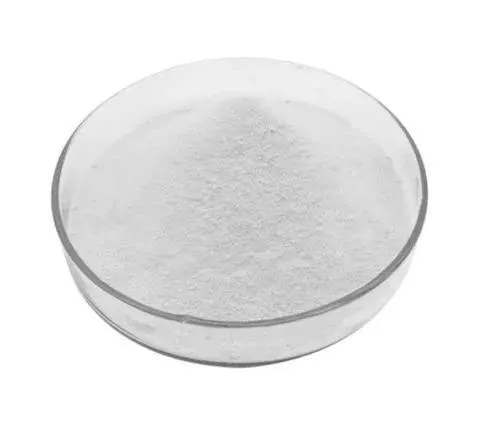 Email: sale@hebeidisha.com
Email: sale@hebeidisha.com
 Tel: +86 13315186550
Tel: +86 13315186550
- Afrikaans
- Albanian
- Amharic
- Arabic
- Armenian
- Azerbaijani
- Basque
- Belarusian
- Bengali
- Bosnian
- Bulgarian
- Catalan
- Cebuano
- China
- China (Taiwan)
- Corsican
- Croatian
- Czech
- Danish
- Dutch
- English
- Esperanto
- Estonian
- Finnish
- French
- Frisian
- Galician
- Georgian
- German
- Greek
- Gujarati
- Haitian Creole
- hausa
- hawaiian
- Hebrew
- Hindi
- Miao
- Hungarian
- Icelandic
- igbo
- Indonesian
- irish
- Italian
- Japanese
- Javanese
- Kannada
- kazakh
- Khmer
- Rwandese
- Korean
- Kurdish
- Kyrgyz
- Lao
- Latin
- Latvian
- Lithuanian
- Luxembourgish
- Macedonian
- Malgashi
- Malay
- Malayalam
- Maltese
- Maori
- Marathi
- Mongolian
- Myanmar
- Nepali
- Norwegian
- Norwegian
- Occitan
- Pashto
- Persian
- Polish
- Portuguese
- Punjabi
- Romanian
- Russian
- Samoan
- Scottish Gaelic
- Serbian
- Sesotho
- Shona
- Sindhi
- Sinhala
- Slovak
- Slovenian
- Somali
- Spanish
- Sundanese
- Swahili
- Swedish
- Tagalog
- Tajik
- Tamil
- Tatar
- Telugu
- Thai
- Turkish
- Turkmen
- Ukrainian
- Urdu
- Uighur
- Uzbek
- Vietnamese
- Welsh
- Bantu
- Yiddish
- Yoruba
- Zulu
Dec . 23, 2024 08:49 Back to list
Xanthan Gum Production Facility for High-Quality Food and Industrial Applications
The Xanthan Gum Factory An Insights into Production and Applications
Xanthan gum is a remarkable polysaccharide that has gained prominence in various industries, from food production to pharmaceuticals. This thickening and stabilizing agent is produced by the fermentation of sugars by the bacterium Xanthomonas campestris. In this article, we will explore the processes involved in the xanthan gum factory, its various applications, and the significance of this versatile ingredient in today's market.
The Production Process
The production of xanthan gum begins with the cultivation of Xanthomonas campestris in a controlled environment. This microorganism requires specific conditions to thrive, including precise temperature and pH levels. The process usually involves two stages fermentation and purification.
1. Fermentation In the fermentation stage, a carbohydrate source, typically glucose or sucrose, is introduced to stimulate the growth of the bacteria. The fermentation is carried out in large bioreactors, which maintain optimal conditions for the bacteria to produce xanthan gum. This stage can last several days, during which the bacteria convert the sugars into xanthan gum through their metabolic processes.
2. Purification Once the fermentation process is complete, the xanthan gum is extracted and purified. This typically involves separating the xanthan gum from the bacterial biomass through processes such as centrifugation and filtration. The resulting gum is then concentrated and dried, often turning into a powder form. This powdered xanthan gum is what consumers and industries utilize in various applications.
Applications of Xanthan Gum
Xanthan gum is celebrated for its unique properties, such as its ability to thicken, stabilize, and emulsify. These characteristics have made it a prized ingredient across multiple industries
1. Food Industry In the food sector, xanthan gum is widely used as a thickening agent in salad dressings, sauces, and soups. It helps improve the texture and mouthfeel of products without altering their flavor. Additionally, it is a gluten substitute in gluten-free baking, providing structure and elasticity to bread and pastries.
xanthan gum factory

2. Cosmetics and Personal Care Xanthan gum is also found in many cosmetic products, including lotions, creams, and shampoos. It acts as a stabilizer, preventing the separation of oil and water phases, thereby enhancing product consistency.
3. Pharmaceuticals In the pharmaceutical industry, xanthan gum is utilized to improve the viscosity of liquid formulations and as a suspension agent for both oral and topical medications. It helps in the controlled release of active ingredients, ensuring the efficacy of the products.
4. Oil and Gas Industry Xanthan gum is crucial in hydraulic fracturing, commonly known as fracking. The gum is used to increase the viscosity of the fracturing fluid, which helps to carry proppants into the fractures of rock formations, enhancing oil recovery.
Environmental Impact and Future Trends
As with any industrial process, xanthan gum production raises questions about environmental impact. However, many manufacturers are adopting sustainable practices, such as using renewable resources for the fermentation process and minimizing waste through efficient production methods.
Looking forward, the xanthan gum market is poised for growth. The increasing demand for gluten-free and clean-label food products, along with the rise in veganism, is driving the popularity of xanthan gum. Furthermore, advancements in biotechnology may lead to improved strains of Xanthomonas campestris, optimizing production yields and lowering costs.
Conclusion
The xanthan gum factory is a hub of innovation and efficiency in the polysaccharide production landscape. As a versatile ingredient with diverse applications across various industries, xanthan gum plays an integral role in enhancing product quality and functionality. With the ongoing pursuit of sustainability and efficiency, the future of xanthan gum production looks promising, paving the way for new opportunities and advancements in the market.
Latest news
-
Certifications for Vegetarian and Xanthan Gum Vegetarian
NewsJun.17,2025
-
Sustainability Trends Reshaping the SLES N70 Market
NewsJun.17,2025
-
Propylene Glycol Use in Vaccines: Balancing Function and Perception
NewsJun.17,2025
-
Petroleum Jelly in Skincare: Balancing Benefits and Backlash
NewsJun.17,2025
-
Energy Price Volatility and Ripple Effect on Caprolactam Markets
NewsJun.17,2025
-
Spectroscopic Techniques for Adipic Acid Molecular Weight
NewsJun.17,2025